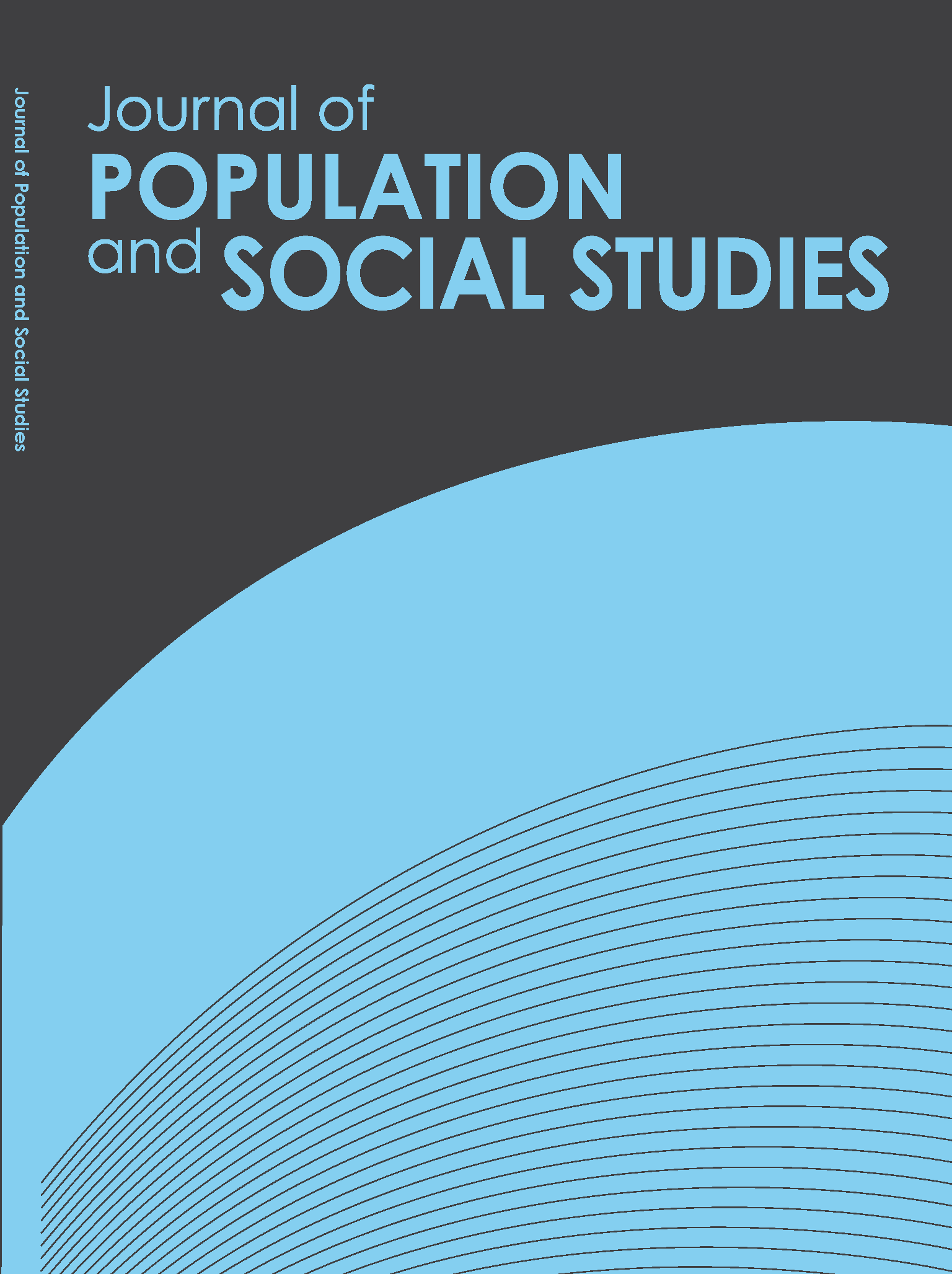Predictors of Investment Expenditure from Foreign Remittances in the Sylhet Region of Bangladesh: A Household-Level Analysis
Main Article Content
Abstract
Remittances, the most explicit outcome of international migration, play a vital role in the socioeconomic development of Bangladesh. The optimum allocation of these scarce resources is of utmost importance for intergenerational consumption smoothing. This study explores the household-level factors of spending remittances in different investment sectors. The study uses a primary dataset from a field survey covering 500 migrant and 250 non-migrant households from 30 clusters of the Sylhet region of Bangladesh. Results indicate that total household income, ownership of residence, asset score, operative land, household size and economic dependency ratio are the significant determinants for investment in an absolute sense. The models for identifying the predictors in different investment sectors suggest that household income, ownership of residence, asset score, education of the household head and household size are common determinants for all the sectors. Substantial investments in different sectors may be determined by several predictors, such as household income, ownership of residence, asset score, education of household head and household size.
Article Details
References
Adams, H. A., Jr. & Page, J. (2005). Do international migration and remittances reduce poverty in developing countries? World Development, 33(10), 1645-1669. doi: https://doi.org/10.1787/9789264013896-17-en
Adams, R. H. & Cuecuecha, A. (2010). Remittances, household expenditure and investment in Guatemala. World Development, 38(11), 1626-1641. doi: https://doi.org/10.1016/j.worlddev.2010.03.003
Baldé, Y. (2010). The impact of remittances and foreign aid on savings/investment in Sub-Saharan Africa (SSA). (Unpublished doctoral dissertation). Université de Limoges, France.
Bangladesh Bureau of Statistics (2011). Household income and expenditure survey: 2010. Dhaka, Bangladesh: Bangladesh Bureau of Statistics, Ministry of Planning, GoB. Retrieved from http://catalog.ihsn.org/index.php/catalog/2257
de Bruyn, T. & Kuddus, U. (2005). Dynamics of remittance utilization in Bangladesh (IOM Migration Working Paper Series No. 18). Retrieved from http://publications.iom.int/system/files/pdf/mrs_18.pdf
Drinkwater, S., Levine, P. & Lotti, E. (2002, December). The Economic Impact of Migration: A Survey. Presentation at the second workshop of the Fifth Framework Programme Project of European Enlargement: the impact of East-West Migration on Growth and Employment, Vienna, Austria.
Fayissa, B. & Nsiah, C. (2010). The impact of remittances on economic growth and development in Africa. The American Economist, 55(2), 92-103. doi: https://doi.org/10.1177/056943451005500210
Glytsos, P. N. (1993). Measuring the income effect on migrant remittances: A methodological approach applied to Greece. Economic Development Cultural Change, 42(1), 131-168. doi: https://doi.org/10.1086/452068
Hossain M. Z., (2015). International migration and household investment behavior of remittances in Sylhet region of Bangladesh. Dhaka, Bangladesh: University Grants Commission of Bangladesh.
Hossain M. Z., Kazal M. H. & Ahmed J. U. (2014). Rural-urban migration and its implications for food security in Bangladesh. Dhaka, Bangladesh: The University Press Limited.
Hossain, M. Z., Kazal, M. M. H. & Faisal, F. E. (2010). Lack of utilization of local funds and investment climate in Sylhet region: Perception analysis, (ERG Working Paper Investment Climate Series No: 2/2010). Retrieved from http://www.ergonline.org/ifc/document/ERG%20WP%202-
%202010_final.pdf
International Organization of Migration (2010). Migration remittances and assets in Bangladesh: Considerations about their intersection and development policy recommendations. Dhaka, Bangladesh: International Organization for Migration (IOM). Retrieved from http://archive.thedialogue.org/PublicationFiles/Migration%20Remittances%20and%20Assets_Bangladesh_final%20appendix.pdf
Mahmud, W. & Osmani, S. R. (1980). Manpower export from Bangladesh to the Middle East: A cost-benefit analysis. Dhaka, Bangladesh: Bangladesh Development Studies.
Moniruzzaman, M. (2009). The economics of migrants’ remittances in Bangladesh. Dhaka, Bangladesh: Muktachinta Prokashona.
Murshid, K. A. S., Iqbal, K. & Ahmed, M. (2002). A study on remittance inflows and utilization. Dhaka, Bangladesh: International Organization of Migration. Retrieved from http://www.un-bd.org/Docs/Publication/IOM--A%20Study%20on%20Remittance%20Inflows%20and%20Utilization.Pdf
Newland, K. & Patrick, E. (2004). Beyond remittances: The role of diaspora in poverty reduction in their countries of origin. Washington, DC: Migration Policy Institute. Retrieved from: http://www.migrationpolicy.org/research/beyond-remittances-role-diaspora-poverty-reduction-their-countries-origin
Quibria, M. G. (1986). Migrant workers and remittances: Issues for Asian developing countries. Asian Development Review, 4(1), 78-99.
Russel, S. (1986). Remittance from international migration: A review in perspective. World Development, 14(6), 677-696.
Siddiqui, T. & Abrar, C. R. (2003). Migrant worker remittances and micro-finance in Bangladesh. Geneva: International Labour Organization. Retrieved from http://ilo.org/wcmsp5/groups/public/---ed_emp/documents/publication/wcms_117970.pdf
Swamy, G. (1981). International migrant workers’ remittances: Issues and prospects (World Bank Staff Working Paper No. 481). Washington, DC: World Bank.
Uddin, J. (2011). Impacts of foreign remittances on expenditure, socio-psychic cost and woman empowerment in rural Bangladesh. (Unpublished doctoral dissertation). Department of Economics, Jahangirnagar University in Bangladesh.
World Bank (2014). Migration and remittances: Recent developments and outlook. Washington, DC: World Bank. Retrieved from http://siteresources.worldbank.org/INTPROSPECTS/Resources/334934-1288990760745/MigrationandDevelopmentBrief23.pdf


